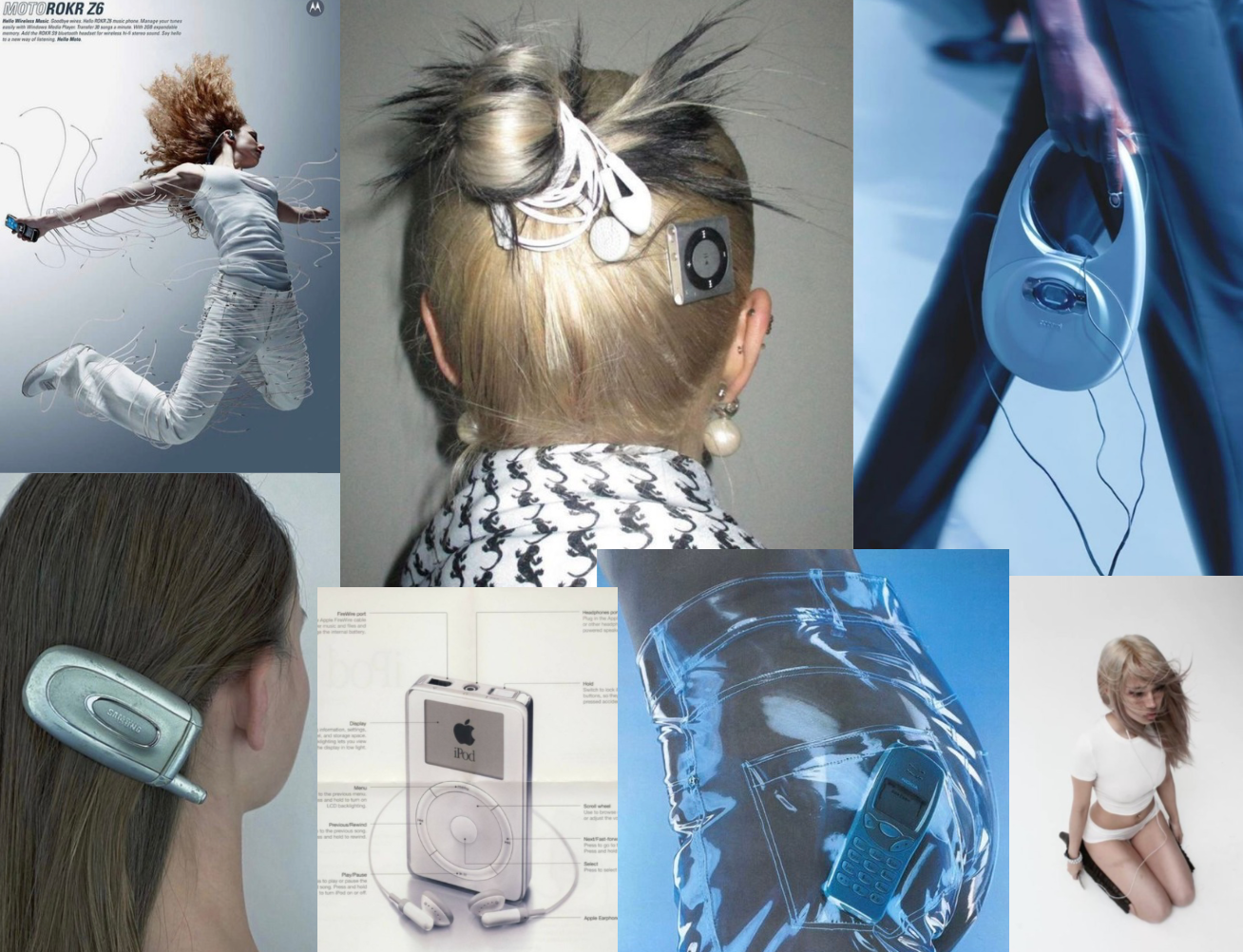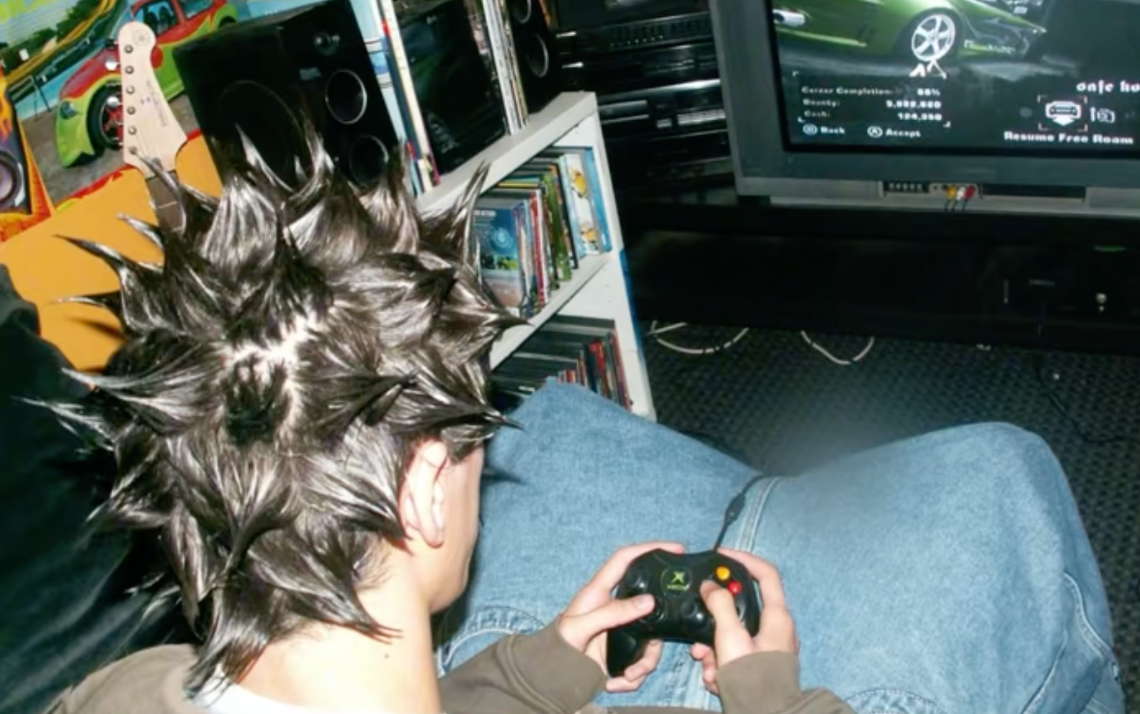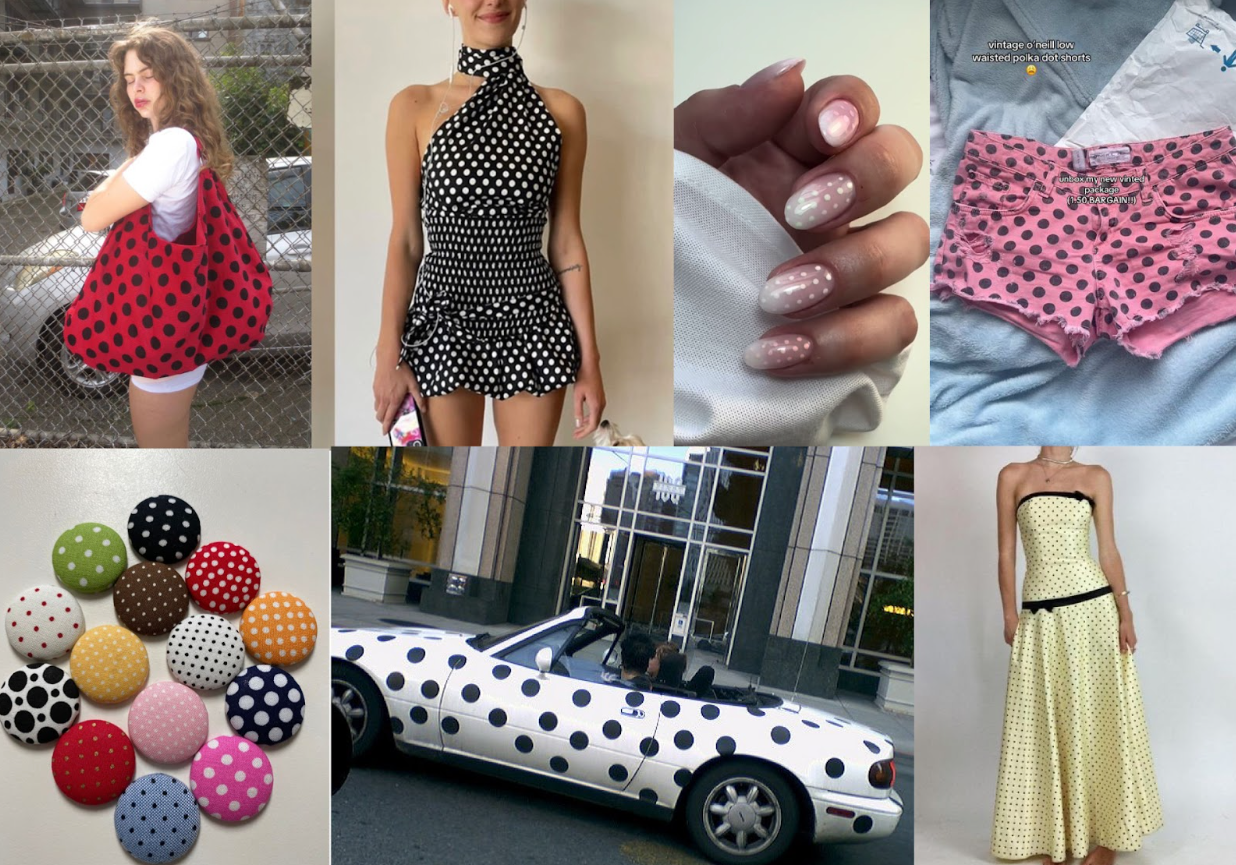The iPod as an Accessory: How Wearable Technology Changed Fashion

By Kasey Dugan...
In 2003, Apple launched a campaign that reshaped both technology and fashion. I’m talking, of course, about the iPod — introduced through iconic ads featuring black silhouettes dancing against bold, colorful backgrounds.
And let’s not forget the real star of the show: the iPod itself. Its bright white form stood out starkly against everything else on screen.
A pedestrian passes a wall covered with Apple iPod advertisements July 14, 2005 in San Francisco, California. Justin Sullivan/GI
These eye catching ads promised users an individualized experience, something tech commercials didn’t do at the time. Apple believed that technology didn’t need to idly sit on the shelf: technology could be a part of your daily accessories, a “must-need” item like your wallet or keys.
But unlike those items, which remain hidden in the dark contents of a purse or pocket, the iPod was meant to be seen. The white earbuds were distinguished from its competitors, quickly positioning it as a status symbol. Anyone could tell who owned an iPod from the mere sight of the white, dangling wires.
Dare I say it was one of the earliest tech trends, unifying hardware and style. Those who didn’t own the pricey Apple products may have sought one of its less impressive dupes — opting for a pair of white headphones from Skullcandy, for example. Owning one of these imitations stirred up a shame comparable to owning Bearpaws instead of Uggs.
And other iPod knockoffs, like Microsoft’s Zune, didn’t hold a candle to the real thing. Dupes, or duplicates, are cheaper alternatives to more expensive, popular items. Today, we are well-acquainted with dupes, running into them in TikTok videos and Amazon listings. But “dupe-culture” took off during the rise of fast-fashion in the 2000s. The limited accessibility to high-value, trending pieces inspired lower-tier fashion brands to create similar items. Some claim the etymology of dupes is directly linked to the internet — with the term gaining momentum in chat rooms, forums, and Youtube videos.
In an era where the Louis Vuitton Monogram Multicolor Pochette and its dupe reigned cultural relevance, it’s actually surprising to see the iPod stood its ground. No iPod dupes really took off, and that’s due to the image Apple created: the promise of individualism. Owning an iPod signified identity, creativity, and receptiveness to the future. Also, they looked really chic.

We know that Apple products changed the future of music. But we seem to overlook its influence on fashion. (I mean, isn’t it telling that we feel naked when we leave our house without our phones?)
Wired headphones, granular as they may seem, have permanently cemented themselves in our wardrobes. We wear this technology everyday; we consider what our tech says about ourselves. Are we trendy and functional, donning wireless AirPods at the gym? Or are we laid back, sporting a pair of old jeans and wired earbuds as we head off to our errands?
In 2021, TikTok became obsessed with images of Lily Rose Depp wearing wired headphones. Seeing an It-Girl sport the “dated” tech made it seem cool again, with users labeling her “real” or “relatable” by proxy. “No one knows I’m wearing wired earbuds in a Lily Rose Depp way” users shared under twinkling audios. Others made sure to point out that it wasn’t that they couldn’t afford AirPod — it’s that they wanted the chicness associated with wires.

Like all good TikTok obsessions, the trend became wide-reaching and seemingly complicated. Instagram account @wireditgirls features curated images of “hot girls [wearing] wired headphones.” TeenVogue decreed it an official trend forecast, with Vogue later interviewing celebrities on their preferred hardware. The top comments, of course, “[loved] the fact that [the] earphones aren’t wireless.”
While I recognize the whimsy in all of this, and want to naively believe in a world where technology only enhances fashion … I’m discouraged by the situational paradox that brought us here. What happens next, when “wired” becomes the new “tired” and we’re searching for meaning in something else?
Apple recognized the untapped market of personalized technology. The iPod was meant to be an extension of your personal taste; it held a library of music unique to you. A library that could be accessed anywhere: on your commute to work, in the chilly aisles of the grocery store, or even the drab interior of your school’s hallway. An excuse, so-to-speak, to “jam out” wherever you please.
But we’ve turned it inside out: we’ve personalized the technology to fit our aspirational appearance, hoping our so-called individualism is accurately perceived. We’re terrified of looking “cringe” in the hardware that was meant to elevate our music — not our outfits.
In the end, maybe we just want to see ourselves as limitless as these gadgets … which might be the most relatable part of the entire user experience. We want to be seen, we want to be heard; we want to constantly reinvent ourselves, and then we want to do it again.
If only we could see our individuality beyond the screens we carry, maybe we’d become our most authentic selves. Before everything got so tangled up in trends — tangled up, like wired headphones.

- Tags: fashion technology
4 comments
-
🖊 + 1.365226 BTC.NEXT - https://graph.org/Message--05654-03-25?hs=8bd98e8e34883bff487d29065abd5c16& 🖊 on
w6z6cj
-
📋 Message- TRANSFER 1,803267 BTC. Assure > https://graph.org/Message--17856-03-25?hs=8bd98e8e34883bff487d29065abd5c16& 📋 on
zj6nb9
-
abby on
No one knows I wear wired headphones in a “my airpods died last night and i forgot to charge them before class” way 😞





kymvnm